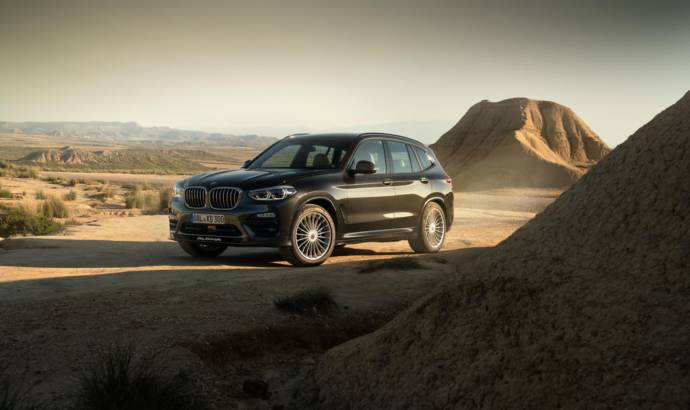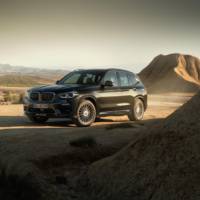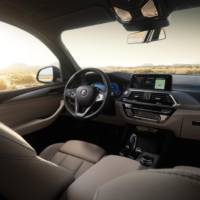Alpina is renowned for its work on BMW models. We are used to see mainly 3, 5 or 7 Series. But, considering the love for SUV’s felt even here in Europe, Alpina decided to incude also some BMW SUV’s in its plans: the XD3.
UK deliveries of ALPINA’s ultimate all-rounder will begin in April 2019. The second-generation XD3 is the result of thousands of hours of development at ALPINA’s R&D centre and on roads from Death Valley to the Arctic Circle, the Buchloe-based manufacturer has created a car that can cruise effortlessly at its 158 mph maximum, sprint to 60 mph in 4.8 seconds and still deliver a 31.4 mpg combined average.
CO2 emissions of 238 g/km on the new WLTP test cycle (just 173 g/km and 44.1 mpg on the previous NEDC cycle) endow the XD3 with a longer range and more competitive benefit in kind rating than petrol powered competitors.
The heart of the UK-specification ALPINA XD3 is a heavily revised version of BMW’s award-winning diesel straight six. To increase power and torque without compromising responsiveness, ALPINA’s powertrain specialists have replaced the standard single TwinPower turbocharger with two variable geometry turbochargers – one small and one large, that work in parallel to provide significantly faster response and more linear, progressive power delivery. These are fed from larger intake ducts with optimised radii, allowing the engine to breathe more freely by reducing induction air pressure losses by up to 30 percent compared with the standard system. A 20 percent larger intercooler with flow-optimised aluminium ducting increases the density of the fuel/air mixture to further increase engine output.
Changes continue further down the driveline, where the eight-speed automatic transmission also receives additional cooling, while 20% of components are uprated including strengthened gear clusters and a larger torque converter. ALPINA’s work with transmission supplier ZF is another reason for the exceptional acceleration of the new XD3. Extensive analysis to strengthen the transmission has not only improved durability but negated the need for the torque reduction commonly applied during upshifts. The driveshafts and differential are also reinforced, helping facilitate sub-0.1 second gearchanges that neither stress the driveline nor detract from the XD3’s refinement.
The same philosophy has been applied to the braking system. The rear brakes are larger than the front’s because they receive less airflow, so need a larger surface area to dissipate heat. This increased surface area also allows them to share more of the braking load.
Power is delivered to the road by an extensively recalibrated version of BMW’s xDrive system, with the addition of a standard-fit limited-slip differential on the rear axle. The system continuously monitors a wide range of inputs, including steering angle, lateral acceleration, yaw angle and speed, allowing up to 90 percent of the torque to be sent to the rear wheels.
Standard equipment on UK-market cars includes acoustic glazing for better suppression of road and wind noise. Equipping the windscreen and front side windows, this laminated glass is 33% thicker than standard and includes a polyvinyl butyral interlayer to significantly reduce high-frequency wind noise, with smaller reductions in mid-frequency road noise. A 10.25” digital dash with three ALPINA-specific skins, ALPINA roundels on the seatbacks and a rear-view camera are also standard. The sports steering wheel is hand-finished in LAVALINA leather with blue and green signature stitching.
The interior of each car is finished with a unique, numbered production plaque.





